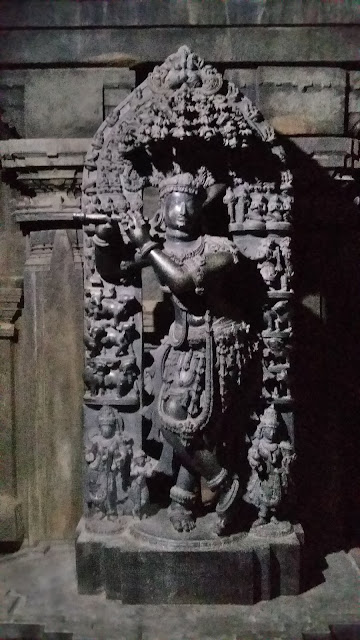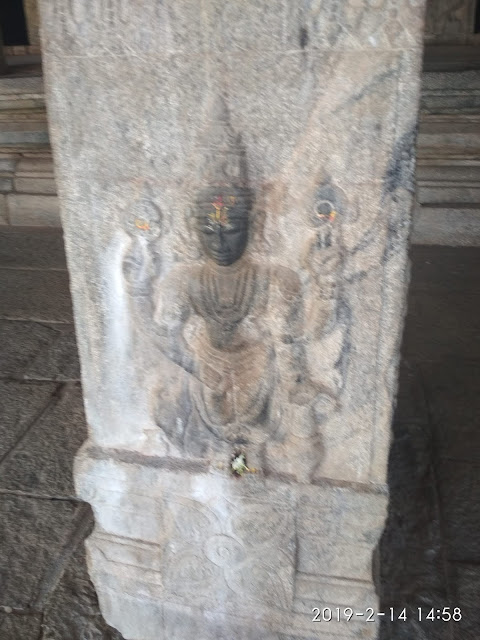Once under the rule of Cholas, Somnathpur was captured by the Hoysala King Vishnuvardhana in AD 1117.Later it was ruled by the Vijayanagara kings and the Wodeyars of Mysore and became one of the foremost agrahara townships during the rule of Narasimha III. An inscription dated 1268 records that Somanatha Dandanayaka, an illustrious Hoysala General established an agrahara in Somnathpur and consecrated the Kesava Temple. The architecture and sculptures are most ornate and a perfect example of Hoysala architecture.The East facing temple has three garbha grihas or sanctums housing idols of Chennakesava, Janardana & Venugopala. The sanctums are securely locked and pujas or offerings are not permitted.
The exquisitely carved sculptures inside the sanctums, on the inner & outer walls and the intricately carved ceilings & pillars fill you with awe. How assiduously and arduously the artisan must have worked to accomplish such breathtaking sculptures.We also found some calligraphy on stone but were unable to decipher the script and unravel the underlying secrets.The colonnaded pavilions surrounding the temple raised visions of the ancient coliseums of Rome - infact the pavilions actually housed innumerable sub sanctums for worship.Contemporary stone sculptures are no match for the brilliance of this antiquarian art.You simply stand there transfixed in admiration. I am dumbfounded and unable to find the right adjectives to describe. Pictures speak more loftily than words.
It was also sad to see degradation and weathering of the sandstone ravaged due to changing climatic conditions over the centuries. Vandals have contributed their share by perpetrating needless damage (decapitation of several human and animal sculptures) and vulgar calligraphy.








































































